-
 Bitcoin
Bitcoin $107,443.3008
-1.17% -
 Ethereum
Ethereum $2,494.2503
-0.63% -
 Tether USDt
Tether USDt $1.0003
0.00% -
 XRP
XRP $2.2496
2.23% -
 BNB
BNB $658.7569
0.63% -
 Solana
Solana $154.9826
1.94% -
 USDC
USDC $1.0000
0.01% -
 TRON
TRON $0.2799
1.07% -
 Dogecoin
Dogecoin $0.1659
-1.78% -
 Cardano
Cardano $0.5745
0.25% -
 Hyperliquid
Hyperliquid $39.7005
0.13% -
 Bitcoin Cash
Bitcoin Cash $519.5989
3.78% -
 Sui
Sui $2.7874
-2.40% -
 Chainlink
Chainlink $13.3762
-1.69% -
 UNUS SED LEO
UNUS SED LEO $9.0784
-0.64% -
 Avalanche
Avalanche $17.9846
-2.81% -
 Stellar
Stellar $0.2390
-0.06% -
 Toncoin
Toncoin $2.9028
0.25% -
 Shiba Inu
Shiba Inu $0.0...01147
-2.17% -
 Litecoin
Litecoin $86.6956
-1.27% -
 Hedera
Hedera $0.1508
-0.50% -
 Monero
Monero $322.6222
3.26% -
 Polkadot
Polkadot $3.4124
-2.99% -
 Dai
Dai $0.9999
0.00% -
 Bitget Token
Bitget Token $4.5434
-1.97% -
 Ethena USDe
Ethena USDe $1.0002
0.00% -
 Uniswap
Uniswap $7.1562
-2.61% -
 Aave
Aave $275.8830
-1.02% -
 Pepe
Pepe $0.0...09790
-4.04% -
 Pi
Pi $0.5018
-5.09%
How to borrow crypto on Bitfinex
Borrowing crypto on Bitfinex allows traders to leverage positions or access liquidity without selling assets, but it requires understanding the process and managing risks carefully.
Apr 06, 2025 at 02:07 am
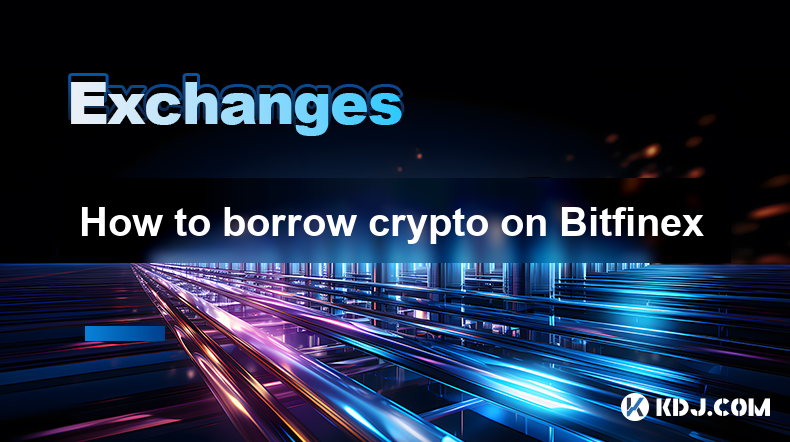
Borrowing crypto on Bitfinex can be a strategic move for traders looking to leverage their positions or access liquidity without selling their assets. Bitfinex, a leading cryptocurrency exchange, offers a platform for users to borrow various cryptocurrencies. To start, users need to understand the process, requirements, and potential risks involved. This article will guide you through the steps of borrowing crypto on Bitfinex, from setting up your account to managing your borrowed assets.
Setting Up Your Bitfinex Account
Before you can borrow crypto on Bitfinex, you need to have an account. If you don't have one, you'll need to sign up on their website. The registration process is straightforward, requiring basic personal information and email verification. Once registered, you must complete the Know Your Customer (KYC) process. This involves submitting identification documents to comply with regulatory standards. After your KYC is approved, you can fund your account with cryptocurrencies or fiat currencies.
Understanding Bitfinex's Borrowing System
Bitfinex offers a peer-to-peer (P2P) lending platform where users can borrow and lend cryptocurrencies. The system operates on a daily interest rate, and borrowers can choose from various terms and rates offered by lenders. The platform matches borrowers with lenders based on the best available rates. It's important to understand that the rates can fluctuate, and you need to keep an eye on the market to ensure you're getting the best deal. Additionally, Bitfinex charges a small fee for facilitating these transactions.
Steps to Borrow Crypto on Bitfinex
To borrow crypto on Bitfinex, follow these steps:
- Log into your Bitfinex account and navigate to the "Borrow" section.
- Select the cryptocurrency you wish to borrow from the list of available options.
- Choose the amount you want to borrow. Keep in mind that you'll need to have sufficient collateral to cover the loan.
- Review the available rates from lenders. You can sort by the lowest rate or shortest term to find the best option.
- Submit your borrowing request. Once submitted, Bitfinex will match you with a lender based on your preferences.
- Monitor your loan. Once your loan is approved, the borrowed crypto will be credited to your account. You can then use it for trading or other purposes.
Collateral and Margin Requirements
When borrowing crypto on Bitfinex, you must provide collateral to secure the loan. The collateral can be in the form of other cryptocurrencies or fiat currencies. The amount of collateral required depends on the value of the loan and the volatility of the assets involved. Bitfinex uses a margin system to ensure that the loan remains covered. If the value of your collateral drops below the required margin, you may face a margin call, where you'll need to add more collateral or repay part of the loan.
Managing Your Borrowed Crypto
Once you have borrowed crypto on Bitfinex, it's crucial to manage it wisely. You can use the borrowed assets for trading, staking, or other investment opportunities. However, remember that you'll need to repay the loan with interest. Keep an eye on the interest rates and the value of your collateral to avoid any issues. You can repay the loan at any time, and Bitfinex will automatically deduct the interest from your account.
Risks and Considerations
Borrowing crypto on Bitfinex comes with certain risks that you should be aware of. The most significant risk is the volatility of cryptocurrencies, which can lead to rapid changes in the value of your collateral. If the market moves against you, you might face a margin call or even liquidation of your assets. Additionally, the interest rates can fluctuate, potentially increasing the cost of your loan. It's essential to have a solid risk management strategy in place and only borrow what you can afford to repay.
Tips for Successful Crypto Borrowing on Bitfinex
To maximize your success when borrowing crypto on Bitfinex, consider these tips:
- Diversify your collateral: Using multiple cryptocurrencies as collateral can help mitigate the risk of a single asset's volatility.
- Monitor interest rates: Keep an eye on the interest rates and be ready to adjust your borrowing strategy if rates become unfavorable.
- Set up alerts: Use Bitfinex's alert system to notify you of significant changes in your loan or collateral value.
- Plan your repayment: Have a clear plan for how you will repay the loan, including setting aside funds for interest payments.
- Stay informed: Keep up with market trends and news that could affect the value of your borrowed crypto and collateral.
Common Questions about Borrowing Crypto on Bitfinex
Q: What types of cryptocurrencies can I borrow on Bitfinex?
A: Bitfinex offers a variety of cryptocurrencies for borrowing, including Bitcoin (BTC), Ethereum (ETH), Litecoin (LTC), and others. The availability can change based on market conditions and lender offerings.
Q: How long can I borrow crypto on Bitfinex?
A: The borrowing term on Bitfinex can vary depending on the lender's terms. You can typically find options ranging from a few days to several months. It's important to review the terms carefully before agreeing to a loan.
Q: What happens if I can't repay my loan on Bitfinex?
A: If you can't repay your loan, Bitfinex may liquidate your collateral to cover the outstanding amount. It's crucial to monitor your loan and collateral value to avoid this situation.
Q: Can I use the borrowed crypto for trading on Bitfinex?
A: Yes, you can use the borrowed crypto for trading on Bitfinex. This can be a way to leverage your positions and potentially increase your returns, but it also increases the risk.
Q: What fees are associated with borrowing crypto on Bitfinex?
A: Bitfinex charges a small fee for facilitating the borrowing and lending transactions. Additionally, you'll need to pay interest on the borrowed amount, which can vary based on the lender's terms.
Q: How do I know if my collateral is sufficient for borrowing on Bitfinex?
A: Bitfinex will calculate the required collateral based on the loan amount and the volatility of the assets involved. You can see the required collateral amount before submitting your borrowing request.
Q: Can I borrow crypto on Bitfinex without completing KYC?
A: No, you must complete the KYC process to borrow crypto on Bitfinex. This is a regulatory requirement to ensure the security and compliance of the platform.
Q: What happens if the value of my collateral drops significantly?
A: If the value of your collateral drops below the required margin, you may face a margin call. You'll need to add more collateral or repay part of the loan to meet the margin requirements.
Q: How can I monitor my loan on Bitfinex?
A: You can monitor your loan through the Bitfinex platform. The "Borrow" section will show you the status of your loan, including the amount borrowed, interest rate, and collateral value.
Q: Is it possible to extend the term of my loan on Bitfinex?
A: The possibility of extending the term of your loan depends on the lender's terms. Some lenders may allow extensions, while others may not. It's important to review the terms before agreeing to a loan.
Disclaimer:info@kdj.com
The information provided is not trading advice. kdj.com does not assume any responsibility for any investments made based on the information provided in this article. Cryptocurrencies are highly volatile and it is highly recommended that you invest with caution after thorough research!
If you believe that the content used on this website infringes your copyright, please contact us immediately (info@kdj.com) and we will delete it promptly.
- Donald Trump, TRUMP Memecoin, and the Latest Move: A New York Perspective
- 2025-07-01 17:10:12
- Cardano, Solana, XRP: Navigating the Crypto Seas in Q3 2025
- 2025-07-01 16:30:12
- Bitcoin Holders and the Price Hold: What's the Deal?
- 2025-07-01 16:50:26
- ChatGPT, Crypto Trading, and a $100K Profit: AI's Edge in the Wild West
- 2025-07-01 16:30:12
- Mutuum Finance Presale vs. Dogecoin: A New Challenger Approaches?
- 2025-07-01 16:50:26
- Memecoins to Buy in July 2025: Riding the Hype Wave
- 2025-07-01 17:10:12
Related knowledge
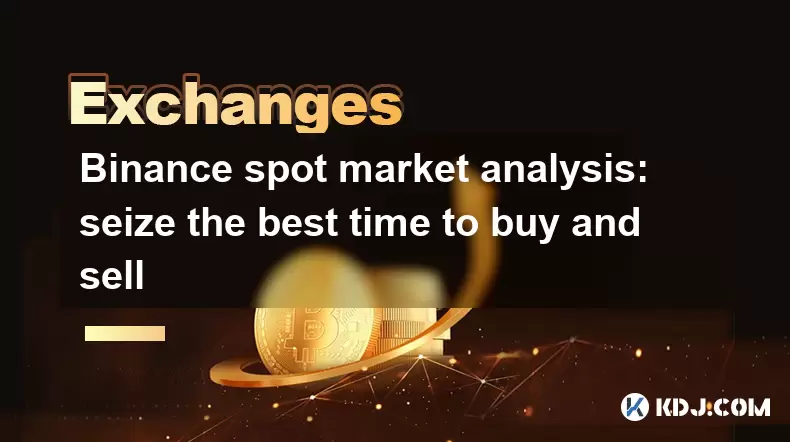
Binance spot market analysis: seize the best time to buy and sell
Jun 19,2025 at 04:56pm
Understanding the Binance Spot MarketThe Binance spot market is one of the most popular platforms for cryptocurrency trading globally. It allows users to trade digital assets at current market prices, making it essential for traders aiming to buy low and sell high. Unlike futures or margin trading, spot trading involves direct ownership of the asset aft...
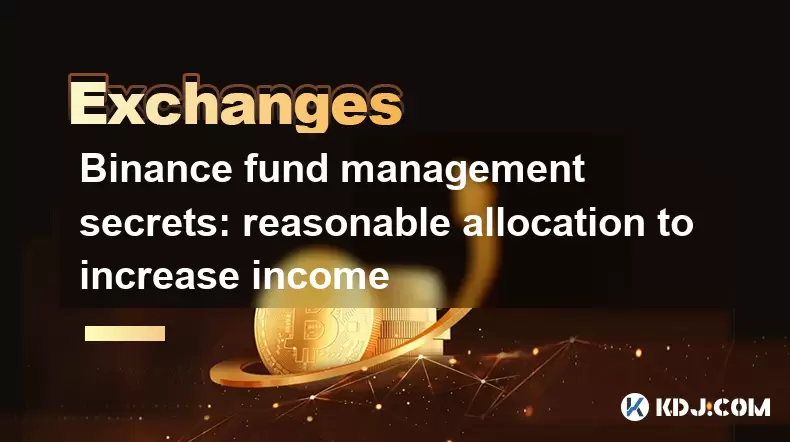
Binance fund management secrets: reasonable allocation to increase income
Jun 22,2025 at 02:29pm
Understanding Binance Fund ManagementBinance fund management involves strategic allocation of your cryptocurrency assets to optimize returns while managing risk. The key to successful fund management lies in understanding how different investment options on the Binance platform can be utilized to create a diversified portfolio. This includes spot tradin...

Binance trading pair selection skills: find the best buying and selling combination
Jun 23,2025 at 02:49am
Understanding the Basics of Trading Pairs on BinanceBefore diving into trading pair selection skills, it's essential to understand what a trading pair is. On Binance, a trading pair refers to two cryptocurrencies that can be traded against each other. For example, BTC/USDT means Bitcoin is being traded against Tether. Each trading pair has its own liqui...

Binance new coin mining strategy: participate in Launchpool to earn income
Jun 23,2025 at 11:56am
What is Binance Launchpool and how does it work?Binance Launchpool is a feature introduced by the world’s largest cryptocurrency exchange, Binance, to allow users to earn new tokens through staking. This platform enables users to stake their existing cryptocurrencies (such as BNB, BUSD, or other supported assets) in exchange for newly launched tokens. T...
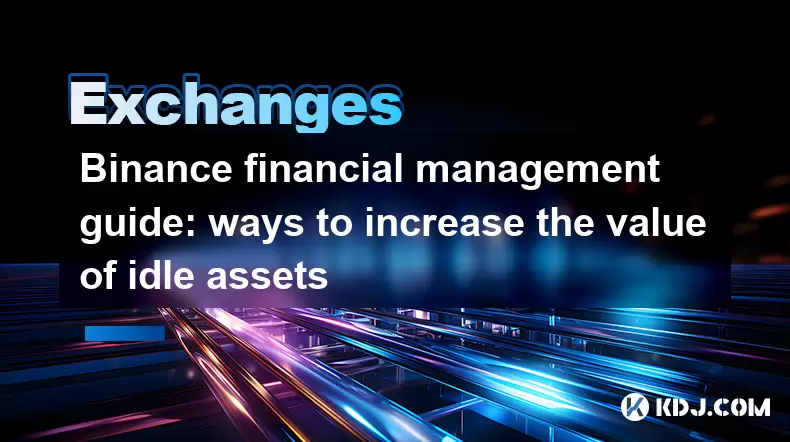
Binance financial management guide: ways to increase the value of idle assets
Jun 19,2025 at 11:22pm
Understanding Idle Assets in the Cryptocurrency SpaceIn the fast-paced world of cryptocurrency, idle assets refer to digital currencies that are not actively being used for trading, staking, or yield farming. Holding these funds in a wallet without utilizing them means missing out on potential growth opportunities. Binance, as one of the leading platfor...
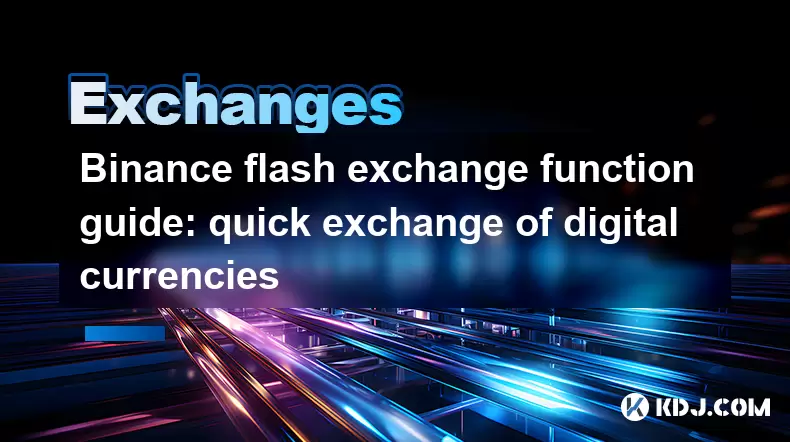
Binance flash exchange function guide: quick exchange of digital currencies
Jun 23,2025 at 12:29pm
What is the Binance Flash Exchange Function?The Binance Flash Exchange function is a powerful tool designed to allow users to instantly swap between supported cryptocurrencies without the need for placing traditional buy/sell orders. This feature simplifies the trading process by offering a direct exchange mechanism, eliminating the requirement to conve...

Binance spot market analysis: seize the best time to buy and sell
Jun 19,2025 at 04:56pm
Understanding the Binance Spot MarketThe Binance spot market is one of the most popular platforms for cryptocurrency trading globally. It allows users to trade digital assets at current market prices, making it essential for traders aiming to buy low and sell high. Unlike futures or margin trading, spot trading involves direct ownership of the asset aft...

Binance fund management secrets: reasonable allocation to increase income
Jun 22,2025 at 02:29pm
Understanding Binance Fund ManagementBinance fund management involves strategic allocation of your cryptocurrency assets to optimize returns while managing risk. The key to successful fund management lies in understanding how different investment options on the Binance platform can be utilized to create a diversified portfolio. This includes spot tradin...

Binance trading pair selection skills: find the best buying and selling combination
Jun 23,2025 at 02:49am
Understanding the Basics of Trading Pairs on BinanceBefore diving into trading pair selection skills, it's essential to understand what a trading pair is. On Binance, a trading pair refers to two cryptocurrencies that can be traded against each other. For example, BTC/USDT means Bitcoin is being traded against Tether. Each trading pair has its own liqui...

Binance new coin mining strategy: participate in Launchpool to earn income
Jun 23,2025 at 11:56am
What is Binance Launchpool and how does it work?Binance Launchpool is a feature introduced by the world’s largest cryptocurrency exchange, Binance, to allow users to earn new tokens through staking. This platform enables users to stake their existing cryptocurrencies (such as BNB, BUSD, or other supported assets) in exchange for newly launched tokens. T...

Binance financial management guide: ways to increase the value of idle assets
Jun 19,2025 at 11:22pm
Understanding Idle Assets in the Cryptocurrency SpaceIn the fast-paced world of cryptocurrency, idle assets refer to digital currencies that are not actively being used for trading, staking, or yield farming. Holding these funds in a wallet without utilizing them means missing out on potential growth opportunities. Binance, as one of the leading platfor...

Binance flash exchange function guide: quick exchange of digital currencies
Jun 23,2025 at 12:29pm
What is the Binance Flash Exchange Function?The Binance Flash Exchange function is a powerful tool designed to allow users to instantly swap between supported cryptocurrencies without the need for placing traditional buy/sell orders. This feature simplifies the trading process by offering a direct exchange mechanism, eliminating the requirement to conve...
See all articles

























































































